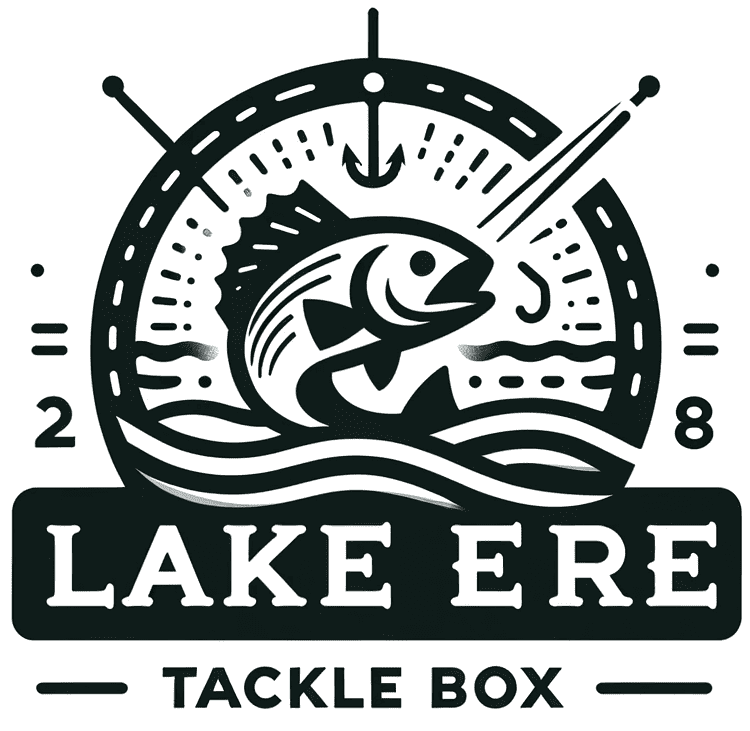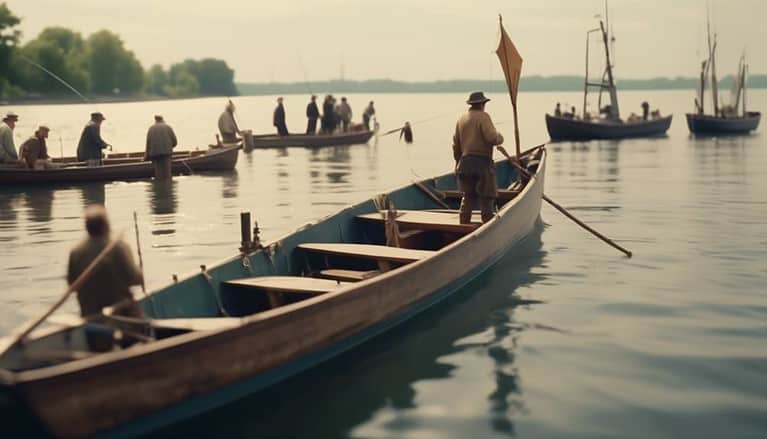Ethical Fishing in Lake Erie: Mastering Catch and Release Techniques
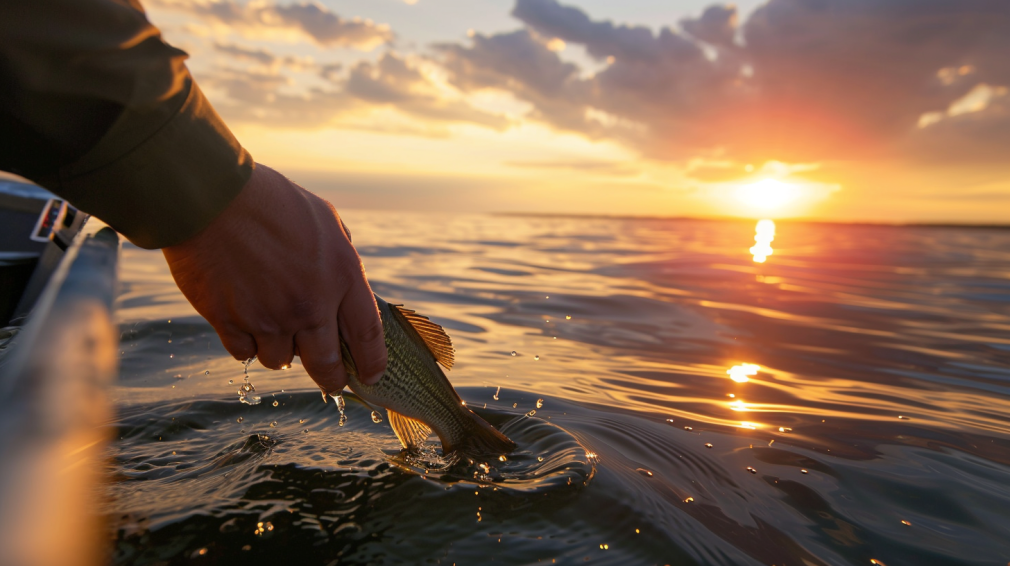
Catch and Release: Lake Erie Ethical Fishing Techniques
Nearly 80% of anglers on Lake Erie practice catch and release, a testament to the growing awareness of sustainable fishing practices. As you cast your line into these teeming waters, you’re part of a community that values not just the sport but the species that call this lake home.
The ethics and techniques of catch and release are critical in maintaining the delicate balance of Lake Erie’s ecosystem, and it’s essential that you’re equipped with the knowledge to do it right. From the gentle handling of fish to understanding their physiology, every action you take can make a difference.
In the following discussion, you’ll explore the nuance of responsible fishing, where the well-being of your aquatic catch is paramount. With the future of recreational fishing evolving, it’s time to consider how your practices on the water today will affect the fish populations of tomorrow.
Table of Contents
Key Takeaways
- Catch-and-release fishing is crucial for the conservation of Lake Erie’s biodiversity
- Proper handling techniques, such as using wet hands or a wet cloth, minimize harm to the fish’s mucous layer
- Using barbless hooks and circle hooks can significantly decrease damage to the fish during the catch
- Educating and promoting sustainable fishing practices through social media is important for the preservation of Lake Erie’s fish populations
Understanding Catch and Release
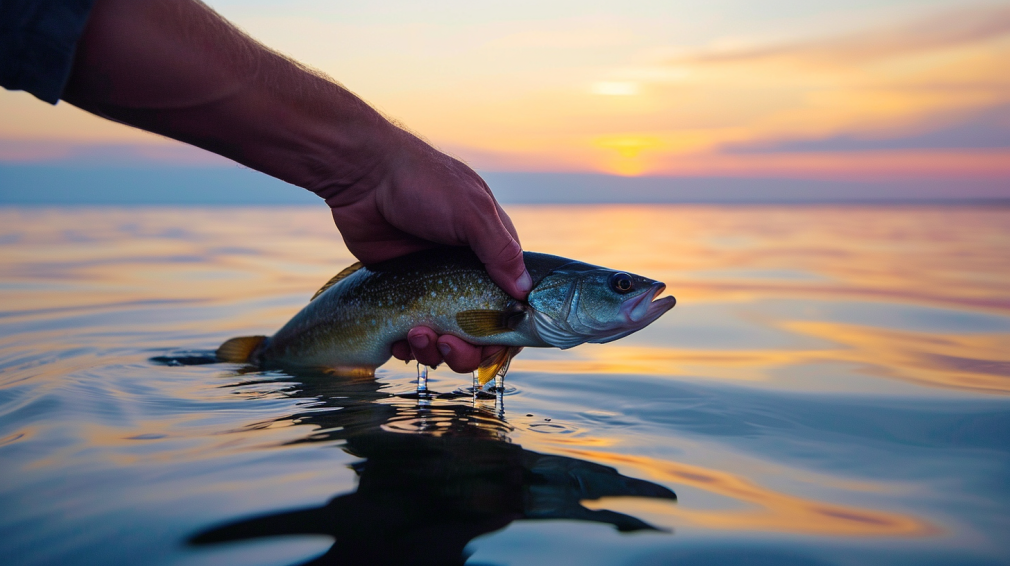
Catch and release fishing, a practice pivotal for the conservation of Lake Erie’s biodiversity, requires anglers to understand and implement techniques that ensure the well-being of fish after their release. As you engage in fly fishing or other methods in the shallow waters of Lake Erie, it’s crucial to adhere to the ethics and techniques that support catch and release principles. By doing so, you contribute to preserving fish populations, allowing them to thrive and reproduce.
Handling fish correctly is essential to minimizing stress and injury. You must avoid touching the gills or squeezing the fish tightly, as these actions can cause significant harm. Instead, handle fish with wet hands or a wet cloth to protect their mucous layer—a barrier against disease and parasites.
When it’s time to return your catch to the water, reviving and releasing the fish properly is imperative. Hold it upright, facing or into the current, to assist its recovery and ensure it swims away with minimal trauma. Additionally, using barbless hooks can significantly decrease the damage inflicted during the catch.
You have a role in promoting catch and release. Share these practices with fellow anglers, get involved in conservation organizations, and use social media and other online platforms to advocate for sustainable fishing. Your actions can make a difference in safeguarding the future of Lake Erie’s aquatic ecosystem.
Ethical Considerations
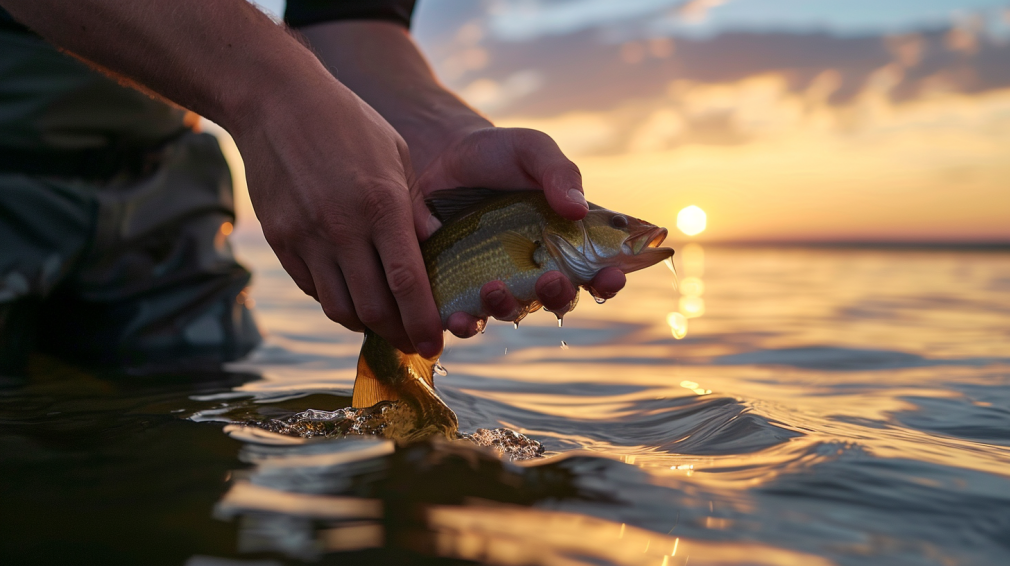
While ensuring the proper handling and release of fish supports their immediate survival, it’s equally crucial to consider the broader ethical implications of catch and release fishing on Lake Erie’s ecosystem. The PA Steelhead Association, for example, champions these ethical considerations, advocating for sustainable fishing practices.
You must recognize that each fish you catch and release is a living entity with intrinsic value. The technique you use, such as employing barbless hooks and circle hooks, directly impacts the fish’s wellbeing. Two years ago, the push for these methods was not as prevalent, but today, there’s a growing consensus on their importance.
Your actions on the water are subject to the privacy policy of the natural world; what you do in the environment stays there long after you’ve gone. Therefore, it’s imperative to leave minimal impact. Rights reserved for future generations depend on the ethical choices you make today.
Below is a table highlighting key considerations:
| Consideration | Technique | Impact on Ecosystem |
|---|---|---|
| Minimizing Injury | Use of barbless hooks | Reduces mortality rate |
| Handling | Support fish horizontally | Prevents body damage |
| Education and Awareness | Share via social media | Promotes best practices |
The implication is clear: ethical catch and release are not just about following guidelines from years ago; it’s a constantly evolving practice that demands your active engagement and technical know-how.
Proper Handling Techniques
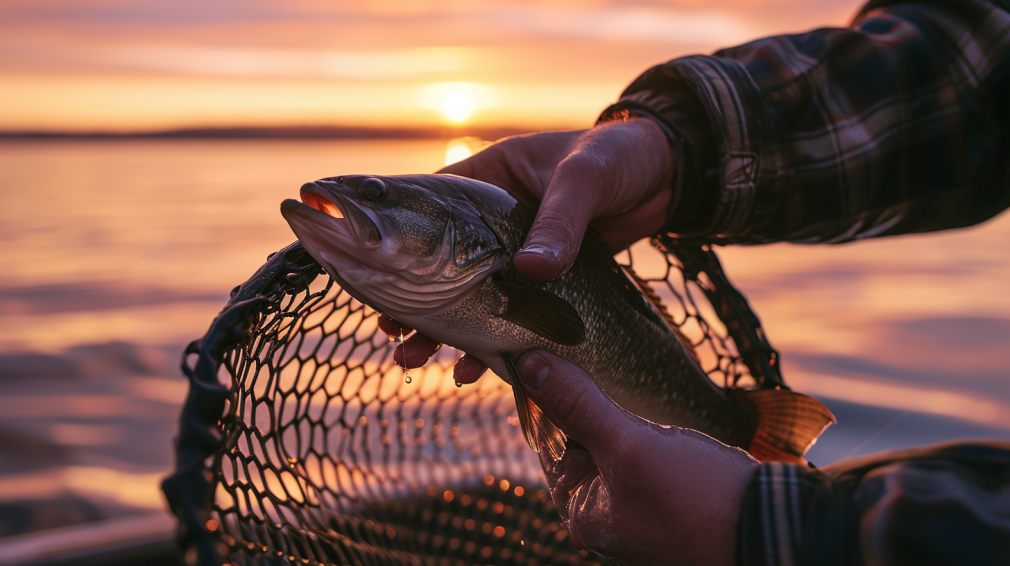
To ensure the health and longevity of Lake Erie’s fish, it’s crucial to master proper handling techniques that minimize harm and stress during catch and release.
When you’ve hooked a fish, remember to use barbless hooks, as they cause less damage and are easier to remove. Once you’ve securely reeled in the fish, handle it with wet hands or a wet cloth. This is vital for preserving the mucous layer on the fish’s skin, which protects against infection and aids in swimming.
You must remove the hook quickly and gently. Employing the right tools, such as needle-nose pliers or a hook remover, can facilitate this process. Furthermore, you should keep the fish in the water as much as possible to reduce air exposure, which can be detrimental to the fish’s health.
When it’s time to release the fish, support it horizontally. This mimics its natural position in the water and prevents undue strain on its body. Avoid bending the fish or handling it roughly.
Proper technique not only contributes to the fish’s immediate survival but also to the overall ecosystem’s health. By following these guidelines, you play a pivotal role in sustaining Lake Erie’s fishing future.
Ensuring Fish Survival
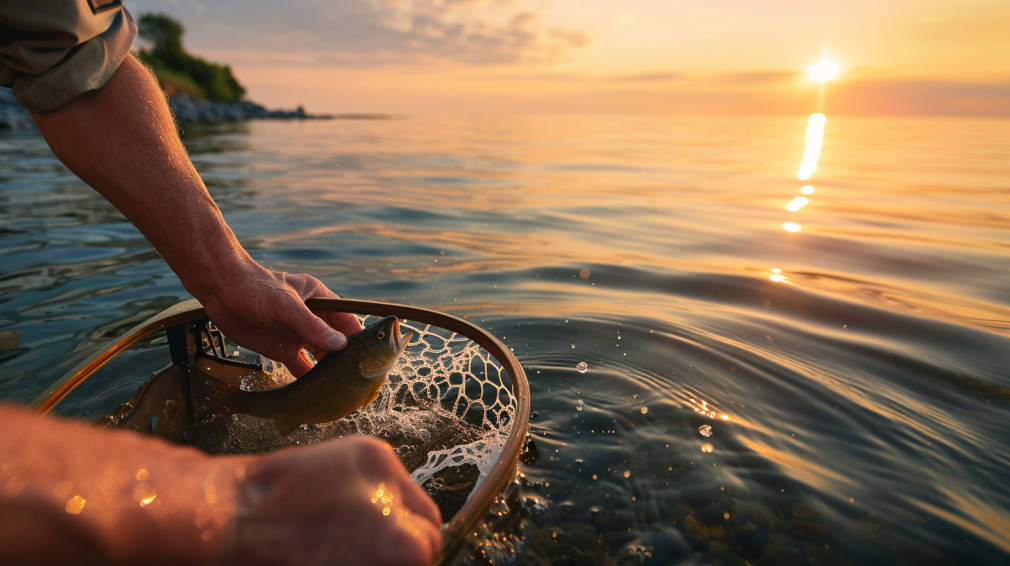
Ensuring the survival of fish after catch and release on Lake Erie hinges on using barbless hooks, which significantly reduce the injury to fish. These hooks allow for a smoother removal, drastically lowering the risk of harming vital organs or causing undue stress.
You must also handle fish with wet hands or a wet cloth. This practice is crucial as it safeguards their protective slime layer, a barrier against infection and disease.
Additionally, you should keep air exposure to a bare minimum. By maintaining the fish in water, you preserve its gill function and prevent undue stress that could lead to mortality post-release.
It’s equally important to select the appropriate tackle. A lighter tackle may prolong the battle, causing excessive exhaustion. Using gear matched to the targeted species ensures a quicker fight, reducing the fish’s energy depletion and aiding in a more successful release.
Lastly, stay informed about the latest research and support initiatives that aim to refine catch and release techniques. Your participation helps spread vital knowledge and education, fostering an angling community dedicated to conservation. Through these efforts, you contribute to sustaining Lake Erie’s vibrant fish populations for generations to come.
Common Release Mistakes
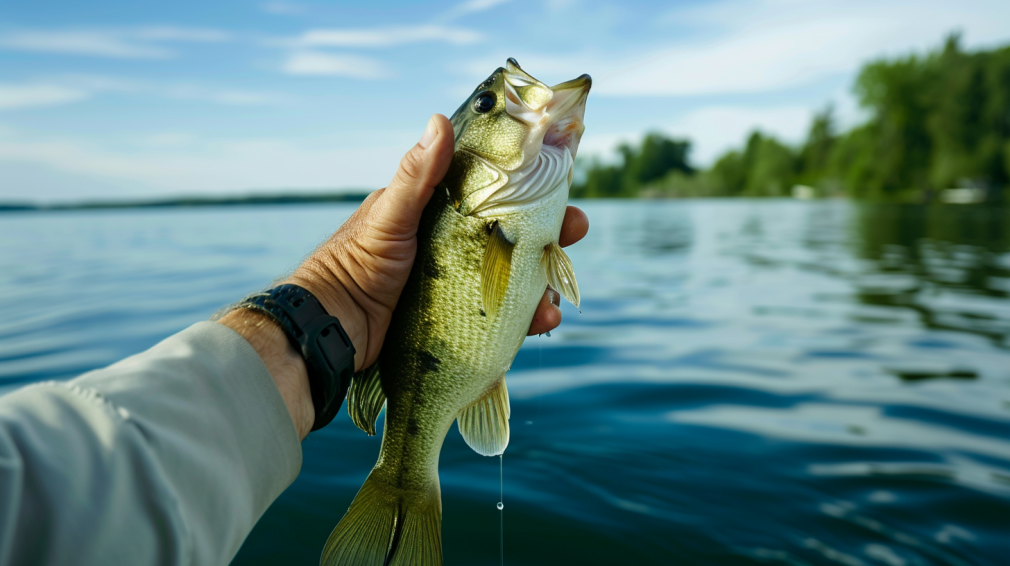
Many anglers inadvertently compromise the health of released fish by making common mistakes during the release process in Lake Erie’s challenging conditions. When temperatures plummet, the urge to snap a ‘grip and grin’ photo with your catch can lead to gill freezing if exposed air is below 30 degrees Fahrenheit. It’s crucial to minimize air exposure and quickly return the fish to the water.
Selecting the appropriate net is another overlooked aspect. A net designed for Steelhead, for example, reduces the chance of escape and injury, ensuring a safer handling process. Avoid using nets with rough or knotted mesh, as these can damage the fish’s protective slime coating and scales.
Handling the fish requires delicacy; using hemostats to remove the fly helps avoid injury to the fish’s mouth and gills. Squeezing the fish, especially around the abdomen, can damage internal organs and should be avoided. Instead, support the fish gently with wet hands or a wet cloth for photos.
Properly reviving the fish before release is also critical. Hold the fish upright, facing the current, and allow it ample time to regain its strength. Only release it once it swims away with purpose, indicating it has sufficiently recovered.
Lastly, consider tailing the fish or photographing it in the water, which can be less stressful and offer a unique perspective.
Conclusion
In conclusion, as a custodian of Lake Erie’s currents, conscientiously catch and carefully release. Your deft handling determines the destiny of each aquatic denizen. Avoiding adverse actions assures their survival, securing a sustainable sport for future fishermen.
By being mindful of your methods, you maintain the mosaic of marine life. Embrace the ethos of ethical angling; your practices preserve the pulse of the lake, ensuring every release resonates with respect and responsibility.
